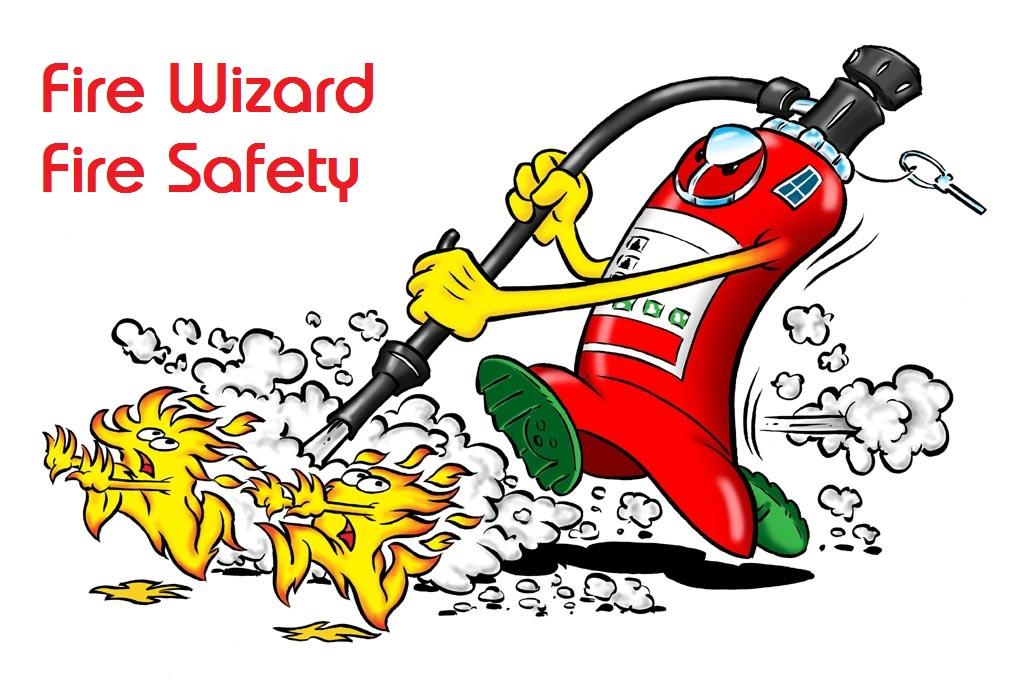-
Posts
2,564 -
Joined
-
Last visited
Everything posted by AnthonyB
-
I'd take that report with a pinch of salt, note that many doors in Schools don't need to be fire doors either. I work with three major Grammar Schools with large campuses of buildings up to and over 100 years old and doors were a big issue. As part of detailed fire risk assessments it was possible to exclude many doors completely; adjust, repair & upgrade others and yes, in some cases replace them. Based on several factors that can mitigate in the FRA it's possible to spread works over an extended period to fit in with 5 & 10 year capital budgets - particularly if the doors, as described, were compliant at the time of install. There is no requirement for the doors to be marked even if new (although it makes sense)
-
It has plenty of information, do you have a copy? It has a table pointing you to the category of activation of opening in different scenarios and the three categories themselves (Critical, Standard & Indirect) have detailed information on the interfacing with the fire alarm.
-
That leeway only applies to extinguishers, with fire alarms the standards don't allow this. The Responsible Person and their competent risk assessor would need to determine what, if any, leeway would be acceptable whilst continuing to comply with the Fire Safety Order. Personally a week either side or at least in the due month wouldn't be too bad and reflects the real world where 'to the day' isn't realistic.
-
Yes, as that requirement was in existence at the time of build and unless you have insurance and building control approval for the effective removal of the system you are in sticky water before even considering the Fire Safety Order! If you split it into compartments that are below the threshold you may be OK - this is common in former large open single occupancy warehouses that are subsequently sub divided for multi occupancy - as the building work creates compartments below the threshold Building Control does not require the sprinklers and the insurers usually likewise. It sounds like the system has been neglected previously!
-

maximum of 4.5m above ground level- misinterpretation?
AnthonyB replied to Jacob's topic in Fire Exits
That diagram reflects the actual text far better! -
It's not an automatic requirement for existing buildings and depends on the individual circumstances - many account for the lack of a system in their PEEPs and allocation of individual buddies to be with them & help them evacuate when the main flow has passed.
-

Fire Risk Assessing Listed Buildings
AnthonyB replied to AlwaysLearning's topic in Fire Risk Assessments
https://historicengland.org.uk/advice/technical-advice/emergency-and-fire/fire-advice/ https://historicengland.org.uk/advice/technical-advice/emergency-and-fire/ https://www.aschb.org.uk/wp-content/uploads/2016/02/ASCHB-SteveEmery-FireSlides-red.pdf https://www.derbys-fire.gov.uk/application/files/8916/0250/5448/Heritage_Fire_Safety_Guidance_v2.pdf -

Does a screwed-on fire door sign make a fire door invalid?
AnthonyB replied to a topic in Fire Doors and Accessories
Possibly, especially if the bolts for the catch plate go straight through the door and out the other side - the door manufacturer should be consulted as to what they will permit. -
Hi, You will need a property lawyers advice for this - it is not unprecedented for needed escape routes into neighbouring premises to be removed where the appropriate legal agreements for access were not in place or expired. On the other hand cases of continuous and uninterrupted use with no legal agreement have been upheld too!
-
If the pipework penetrates through a fire stopped floor then it should indeed be correctly firestopped.
-

maximum of 4.5m above ground level- misinterpretation?
AnthonyB replied to Jacob's topic in Fire Exits
The diagram does look like it implies window height - but all the text points otherwise as Approved Document B uses the following phrase in relation to the point for where Means of Escape requirements become more stringent: "upper storeys a maximum of 4.5m above ground level" Appendix D states that a storey is measured from the upper floor surface of the floor in question to ground level and has nothing to do with the escape height (which is actually 5.6m as where escape windows are provided in flats up to 4.5m from ground they can have their lowest point up to 1100mm from the floor level). The specification for windows only details dimensions and not total height. It's not the most clear! -

Internal garage door access for 3storey, 4apartment building
AnthonyB replied to Bruce Cox's topic in Fire Risk Assessments
I'd need to see plans however in any case the works will be subject to the Building Regulations and you will need prior approval of your proposed changes from Local Authority Building Control or an Approved Inspector. If these are just pedestrian doors between the garage and the open air there shouldn't be fire issues, if internal to common space there would be some requirements to make it compliant. -
As a wall lining it would be subject to Building Regulations and Fire Regulations and depending on location and area to be covered would have to conform to certain requirements regarding flammability and surface spread of flame, so it's a moot point as to whether the furniture regulations apply or not.
-
Not unless the correct product is chosen and applied in the correct way, it's not a magic substance. You will find suitable products and a source of specific advice here: https://envirograf.com/
-
Unless your lease says you have to I wouldn't have thought so. Do you pay service charge (as there may be external common parts and block insurance as well as the internal common parts you don't use)- it may be the case that the wording is vague enough to make you have to pay. You would need to consult a property law specialist. I wouldn't contribute to extinguishers even if living off the common areas as Government fire safety guidance has said for 10 years (& still does) they are not required and should be removed!
-

Use RF interlinked fire alarms without the need for a control panel
AnthonyB replied to MMB's topic in Fire Alarm Systems
It's the 3rd storey that does it, smaller conversions can use the Grade D stuff you suggested. -

Can we get anybody to do actions from fire risk assessment
AnthonyB replied to a topic in Fire Risk Assessments
Note - if someone else other than the Responsible Person does the work and it's not good enough they can't take the blame off the RP, at worst they would join them in the dock, so it pays to choose with care. -

Can we get anybody to do actions from fire risk assessment
AnthonyB replied to a topic in Fire Risk Assessments
As said - it depends on the works and the competence of who is doing it. Certain work needs specialists, other is more straightforward. -

Use RF interlinked fire alarms without the need for a control panel
AnthonyB replied to MMB's topic in Fire Alarm Systems
No as it is asking for a Grade A system in the common areas, which is one using commercial equipment (control panel, break glass points, etc) not Grade D domestic smoke/heat alarms. The requirement reflects current benchmarks for this type of premises (LACORS guide and BS5839-6) -
It depends - if the block was constructed correctly for stay put and is still in good condition with no breaches of construction it would be OK - there are many things that could affect this though, the Fire Risk Assessment for the block should have checked this. To be correct the individual smoke alarm systems in each flat should be linked to the Telecare (e.g. Tunstall) system to raise the alarm if a flat has an activation.
-
Yes if you message me with an email address I have something of use
-

Responsible person - single name or company?
AnthonyB replied to steve m's topic in Fire Risk Assessments
The responsible person can be a corporate entity. A multi occupied premises may have multiple RP's. The RP is the person or entity at the top of the tree - employer/person having control/owner. Whilst others may have day to day responsibilities towards a premises they are not the RP as set out in law, merely persons with responsibilities - whilst they may be directly responsible for an offence and can (& have been) individually prosecuted, it's usually not instead of the actual 'tree top' RP but as well as. -
Smoke seals would protect the escape route and a well sealed cupboard will have limited growth in this situation as there would be limited oxygen (& limited materials) to cause spread - better to contain it - it may even go out. Depending on the design category of the system & the strategy there may be detection in the riser shaft or cupboards, a typical stay put wouldn't always have them for the shafts/cupboards just the main room, but there are no hard and fast rules, you see it done differently all the time and as long as the minimum expectations are met it's OK The revised LGA Guide will hopefully deal with this and as it is planned to have special status (failure to follow it would be evidence in it's own right of an offence whereas at the moment it's just a benchmark to judge against) will be the one to follow closely.
-
I've seen plenty of services cupboards with normal locks and internal thumbturns on modern builds all over the country - it's rare to see FB locks and Building Regulations doesn't require them. So it seems OK to change them - if there was a fire the fire service would use thermal image cameras to check it's the right door an use their entry tools to force it.
-
Check out the manual - it might help you and if not has manufacturer contact details to ask them direct. http://www.detaelectrical.co.uk/images/downloads/products/safety_alarms/Instructions/INS_0066_V1.1_-_Smoke_Heat_Alarm_Instructions.pdf

